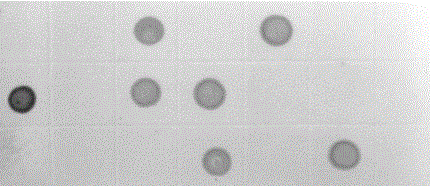Hybridoma cell strain secreting monoclonal antibody against citrus tatter leaf virus and application of monoclonal antibody thereof
A technology of citrus leaf breaking virus and hybridoma cell lines, which is applied in antiviral immunoglobulin, analytical materials, biochemical equipment and methods, etc., can solve the problems of low efficiency and achieve the effect of sensitive detection
- Summary
- Abstract
- Description
- Claims
- Application Information
AI Technical Summary
Problems solved by technology
Method used
Image
Examples
Embodiment Construction
[0013] The hybridoma cell line 6C5 secreting anti-Citrus Leaf Broken Virus monoclonal antibody was preserved on January 22, 2014 in the General Microbiology Center of the Chinese Microbiological Culture Collection Management Committee, Institute of Microbiology, Chinese Academy of Sciences, and the preservation number is CGMCC No.8779. It can Secretion of monoclonal antibodies against citrus leaf clipping virus.
[0014] The indirect ELISA titer of monoclonal antibody against citrus leaf broken virus ascitic fluid reached 10 -7 , the type and subclass of the antibody are IgG1 and kappa chain, and the monoclonal antibody can have a specific immune binding reaction with the 27kD coat protein subunit of citrus leaf leaf virus.
[0015] Monoclonal antibodies against citrus leaf clipping virus have specific immune reactions only with citrus leaf clipping virus, but with citrus decay virus, citrus split skin virus, turnip mosaic virus, tomato mosaic virus, tobacco mosaic virus, Pot...
PUM
 Login to View More
Login to View More Abstract
Description
Claims
Application Information
 Login to View More
Login to View More - R&D
- Intellectual Property
- Life Sciences
- Materials
- Tech Scout
- Unparalleled Data Quality
- Higher Quality Content
- 60% Fewer Hallucinations
Browse by: Latest US Patents, China's latest patents, Technical Efficacy Thesaurus, Application Domain, Technology Topic, Popular Technical Reports.
© 2025 PatSnap. All rights reserved.Legal|Privacy policy|Modern Slavery Act Transparency Statement|Sitemap|About US| Contact US: help@patsnap.com


